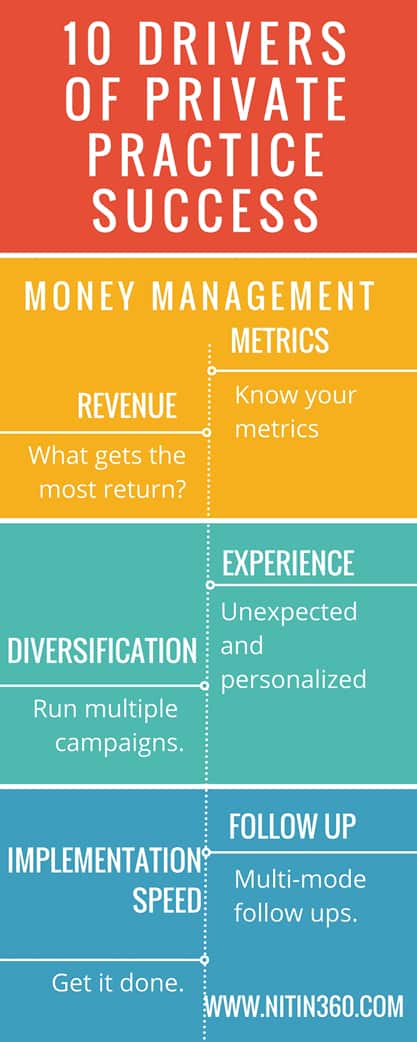Traditionally, the patient is the last payer (and in some cases, the most difficult payer) for physical therapy private practices.
 In the new economy, patients face rising costs, increased out-of-pocket expenses with higher premiums, and more copayments. This puts the responsibility of collections on the practice and makes the staff (and the biller) responsible for collections of payments from patients.
In the new economy, patients face rising costs, increased out-of-pocket expenses with higher premiums, and more copayments. This puts the responsibility of collections on the practice and makes the staff (and the biller) responsible for collections of payments from patients.
This is a bit of a catch 22 for most practices.
On the one hand, you need to get paid. On the other, you don’t want to be looked at as the evil ‘bill collector’ and endanger your relationships with patients.
There’s a tendency to ‘let things go’ and a hesitation to aggressively pursue payments. This does more harm than good.
 To make matters worse, studies have shown that patients view the payment of their healthcare bills as a low priority. Acording to a December 2008 report by Online Resources Corp, households that set up recurring payments have a significantly lower likelihood of becoming delinquent in the first place, highlighting the importance of an EMR that gives you the ability to accept recurring payments or payment schedules (split-pay) using credit cards. When U.S. households pile up their bills each month and make decisions about their delinquency budget, not all bills stack up equally.
To make matters worse, studies have shown that patients view the payment of their healthcare bills as a low priority. Acording to a December 2008 report by Online Resources Corp, households that set up recurring payments have a significantly lower likelihood of becoming delinquent in the first place, highlighting the importance of an EMR that gives you the ability to accept recurring payments or payment schedules (split-pay) using credit cards. When U.S. households pile up their bills each month and make decisions about their delinquency budget, not all bills stack up equally.
In fact, healthcare bills (including physical therapy) are a low priority. Also, the web is the top choice for payment, but very few practices provide a web-based payment option. The big question for you is:
Here’s what patients are looking for:
- Multiple ways to make a payment
- Someone who makes them feel at ease with their ‘debt’
- The ability to make payments over time
The silver lining is that a majority of the reasons for self-pay failure can be handled effectively with simple, easy to understand self-pay policies (one-page forms), prompt billing, and financing options.
- Getting payments up-front as quickly as possible and simplifying the process with an easy, convenient payment option (swiping a credit card, paying over the phone or online through a secure web portal) increases cash flow and improves the accounts receivable cycle.
- In addition to creating a firm patient self-pay policy for prompt, full payment, it’s critical for an EMR system to alert patients about self-pay balances and financial obligations. The use of multi-mode contact like email, text, and voice is an automated, yet discrete way to remind patients of their financial obligations without alienating the patient relationship
- Ideally, a patient should get a reminder along with precise instructions on how to settle their balance. An example is the ability to make one-time or recurring payments through a secure web portal that encrypts patient credit card information. In the event of an outstanding balance, the follow-up process to collect the outstanding amount should be automated, easing the administrative burden on the staff and increasing cash flow in the practice.
- Patients should be able to access a simple, easy-to-understand billing statement, keep track of their balances and make secure payments online with a credit / debit card or a checking account. The patient portal or EMR system should send balance reminder requests automatically, saving time and reducing expenses.
- Ask them to pay right away
- Have the right person ask for the money at the right time
- Ask ‘closed loop’ questions
 If a patient talks about their financial difficulty, show empathy and let them know you understand their plight. Tell them, “I completely understand where you are coming from, and I want to make it easy for you. So here’s what I can do for you. How about if we split your payment into three monthly payments to be applied over the next three months. Wouldn’t that make things easier for you?”
If a patient talks about their financial difficulty, show empathy and let them know you understand their plight. Tell them, “I completely understand where you are coming from, and I want to make it easy for you. So here’s what I can do for you. How about if we split your payment into three monthly payments to be applied over the next three months. Wouldn’t that make things easier for you?”
This changes your practice perception. You are no longer a ‘bill collector’. Instead, you are a ‘practice that cares’.
Don’t try and do this yourself or delegate it to just about anyone. Make sure there is someone in your practice who has the right personality to be able to pull this off legitimately and effectively. It’ll make an immediate different to your bottom line.






